IWH-CompNet Discussion Papers
The IWH-CompNet Discussion Paper series presents research based on productivity data provided by the Competitiveness Research Network (CompNet). The international network has the objective to develop a consistent analytical framework for assessing productivity and competitiveness. The papers are released in order to make the research of CompNet generally available, in preliminary form, to encourage comments and suggestions prior to final publication.
Current Issues
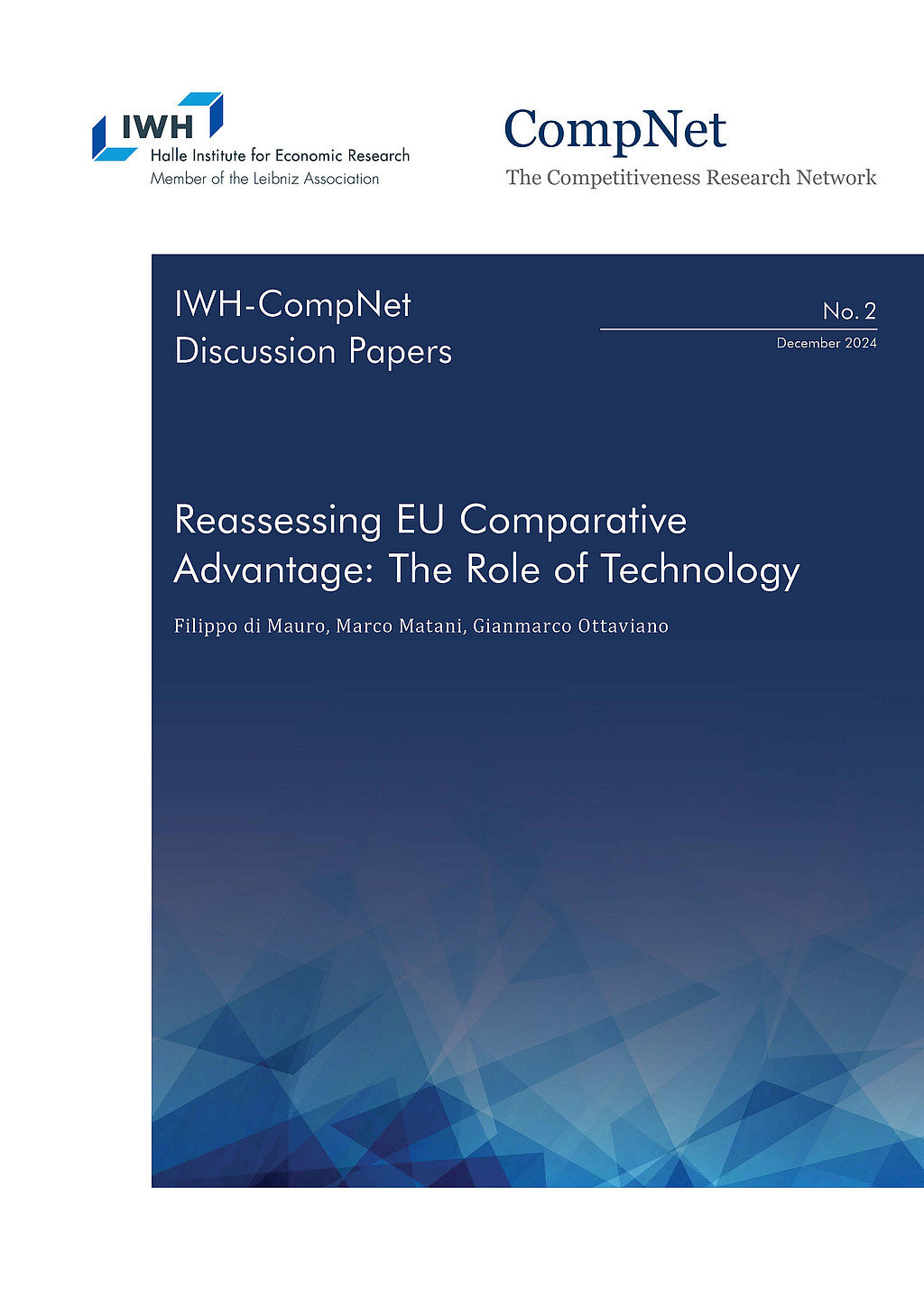
Reassessing EU Comparative Advantage: The Role of Technology
in: IWH-CompNet Discussion Papers, No. 2, 2024
Abstract
<p>Based on the sufficient statistics approach developed by Huang and Ottaviano (2024), we show how the state of technology of European industries relative to the rest of the world can be empirically assessed in a way that is simple in terms of computation, parsimonious in terms of data requirements, but still comprehensive in terms of information. The lack of systematic cross-industry correlation between export specialization and technological advantage suggests that standard measures of revealed comparative advantage only imperfectly capture a country’s technological prowess due to the concurrent influences of factor prices, market size, markups, firm selection and market share reallocation.</p>
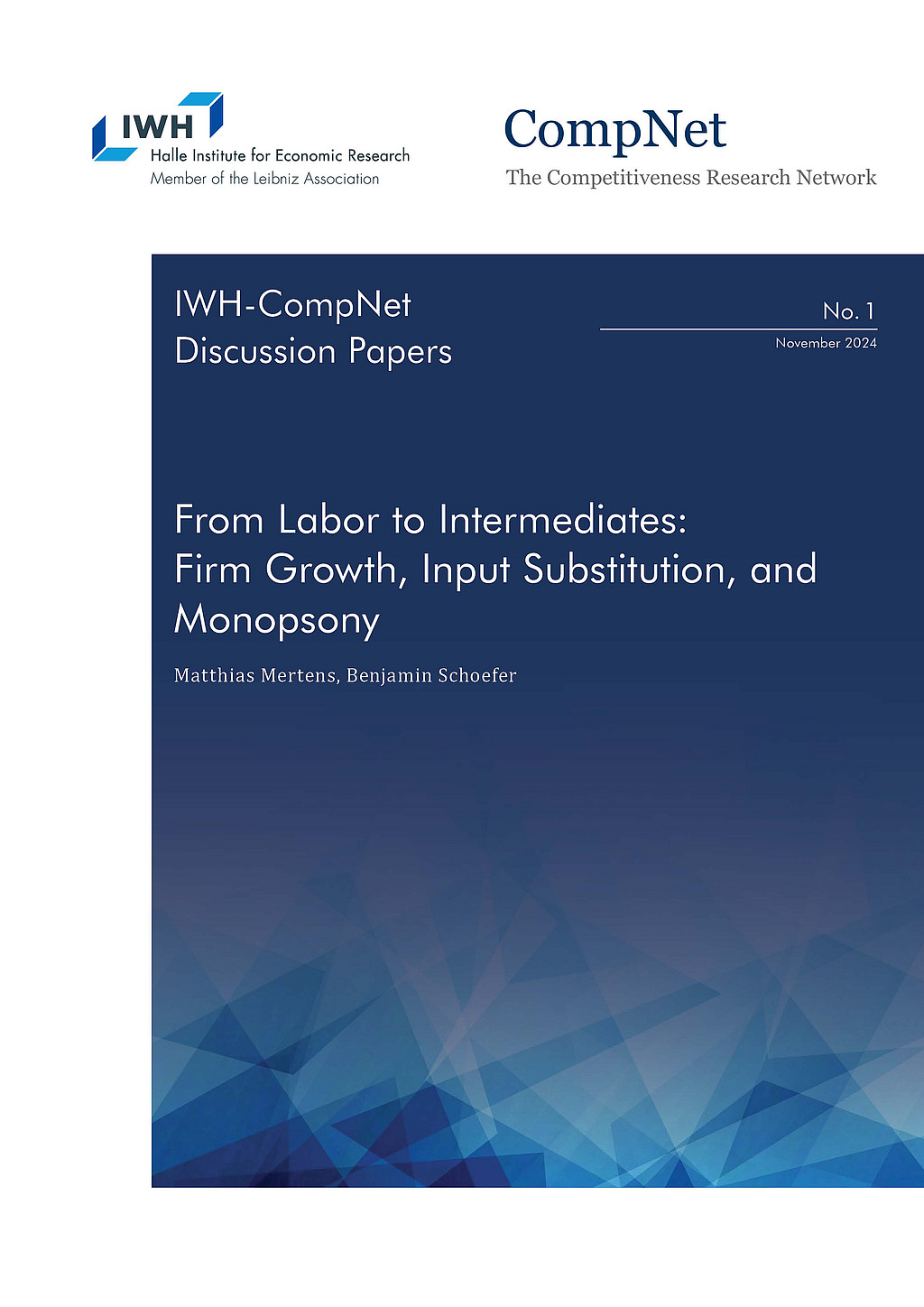
From Labor to Intermediates: Firm Growth, Input Substitution, and Monopsony
in: IWH-CompNet Discussion Papers, No. 1, 2024
Abstract
<p>We document and dissect a new stylized fact about firm growth: the shift from labor to intermediate inputs. This shift occurs in input quantities, cost and output shares, and output elasticities. We establish this fact using German firm-level data and replicate it in administrative firm data from 11 additional countries. We also document these patterns in micro-aggregated industry data for 20 European countries (and, with respect to industry cost shares, for the US). We rationalize this novel regularity within a parsimonious model featuring (i) an elasticity of substitution between intermediates and labor that exceeds unity, and (ii) an increasing shadow price of labor relative to intermediates, due to monopsony power over labor or labor adjustment costs. The shift from labor to intermediates accounts for one half to one third of the decline in the labor share in growing firms (the remainder is due to wage markdowns and markups) and rationalizes most of the labor share decline in growing industries.</p>
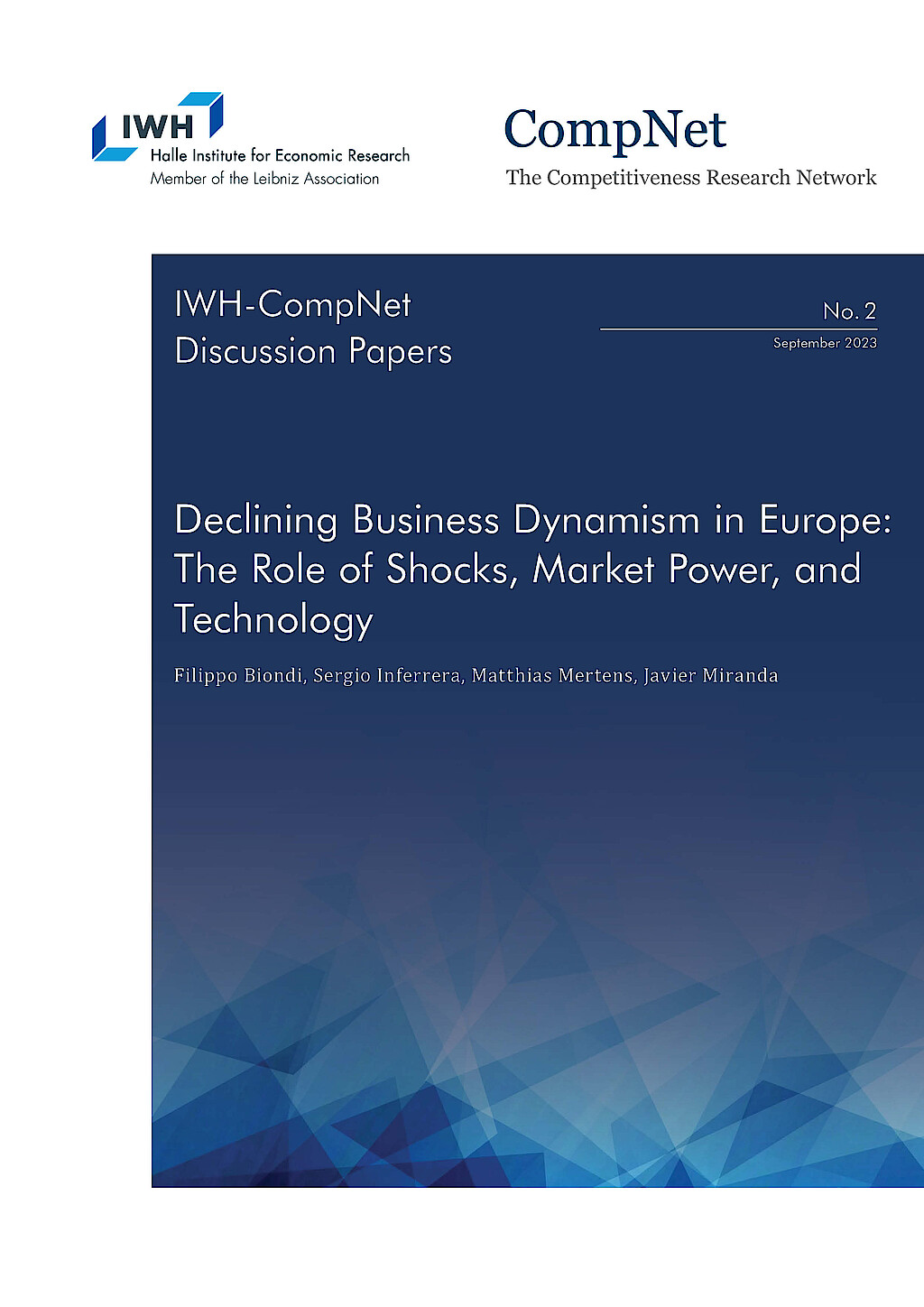
Declining Business Dynamism in Europe: The Role of Shocks, Market Power, and Technology
in: IWH-CompNet Discussion Papers, No. 2, 2023
Abstract
We study changes in business dynamism in Europe after 2000 using novel micro-aggregated data that we collected for 19 European countries. In all countries, we document a broad-based decline in job reallocation rates that concerns most economic sectors and size classes. This decline is mainly driven by dynamics within sectors, size, and age classes rather than by compositional changes. Large and mature firms experience the strongest decline in job reallocation rates. Simultaneously, the employment shares of young firms decline. Consistent with US evidence, firms’ employment has become less responsive to productivity shocks. However, the dispersion of firms’ productivity shocks has decreased too. To enhance our understanding of these patterns, we derive and apply a novel firm-level framework that relates changes in firms’ sales, market power, wages, and production technology to firms’ responsiveness and job reallocation.
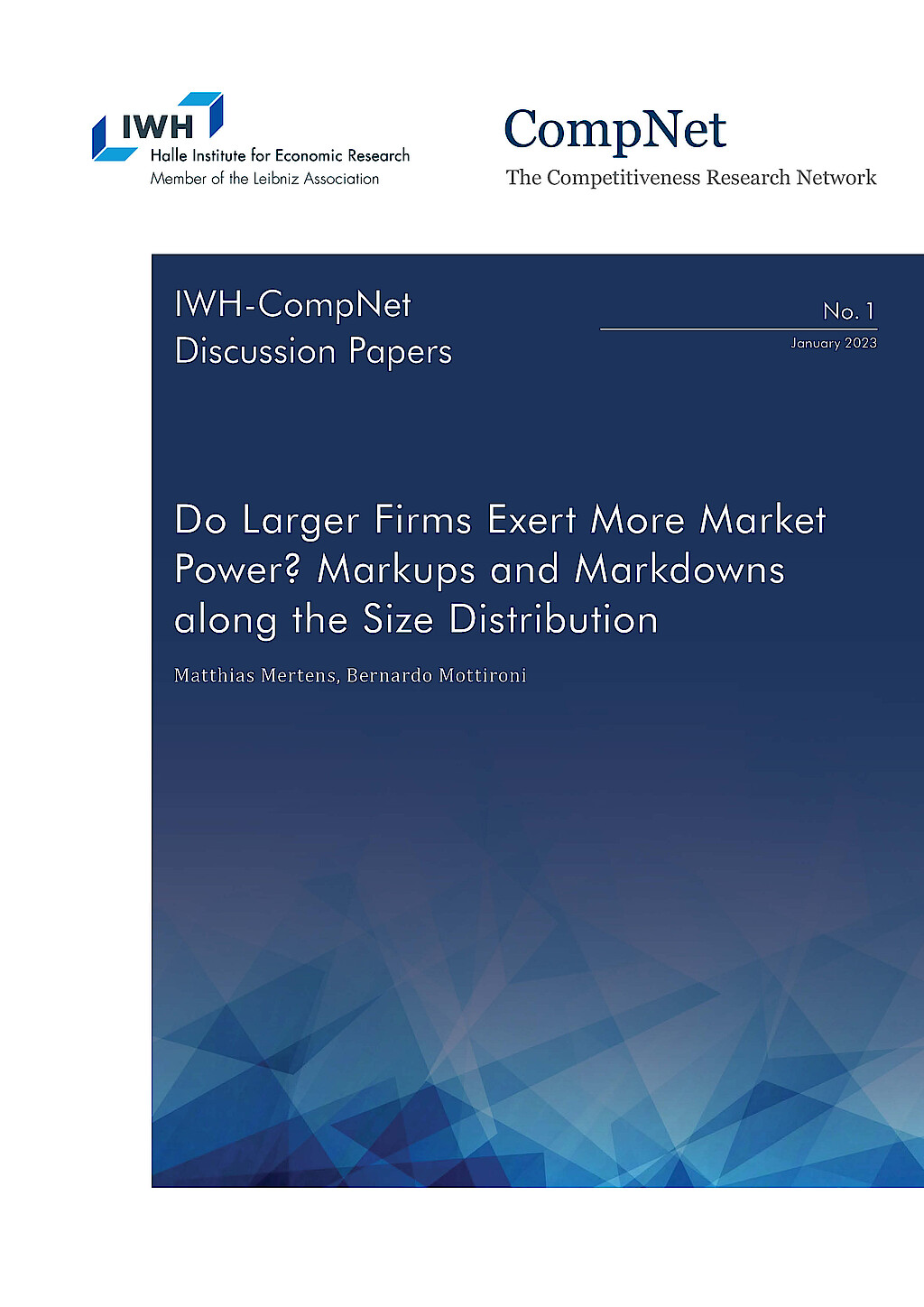
Do Larger Firms Exert More Market Power? Markups and Markdowns along the Size Distribution
in: IWH-CompNet Discussion Papers, No. 1, 2023
Abstract
Several models posit a positive cross-sectional correlation between markups and firm size, which characterizes misallocation, factor shares, and gains from trade. Accounting for labor market power in markup estimation, we find instead that larger firms have lower product markups but higher wage markdowns. The negative markup-size correlation turns positive when conditioning on markdowns, suggesting interactions between product and labor market power. Our findings are robust to common criticism (e.g., price bias, non-neutral technology) and hold across 19 European countries. We discuss possible mechanisms and resulting implications, highlighting the importance of studying input and output market power in a unified framework.
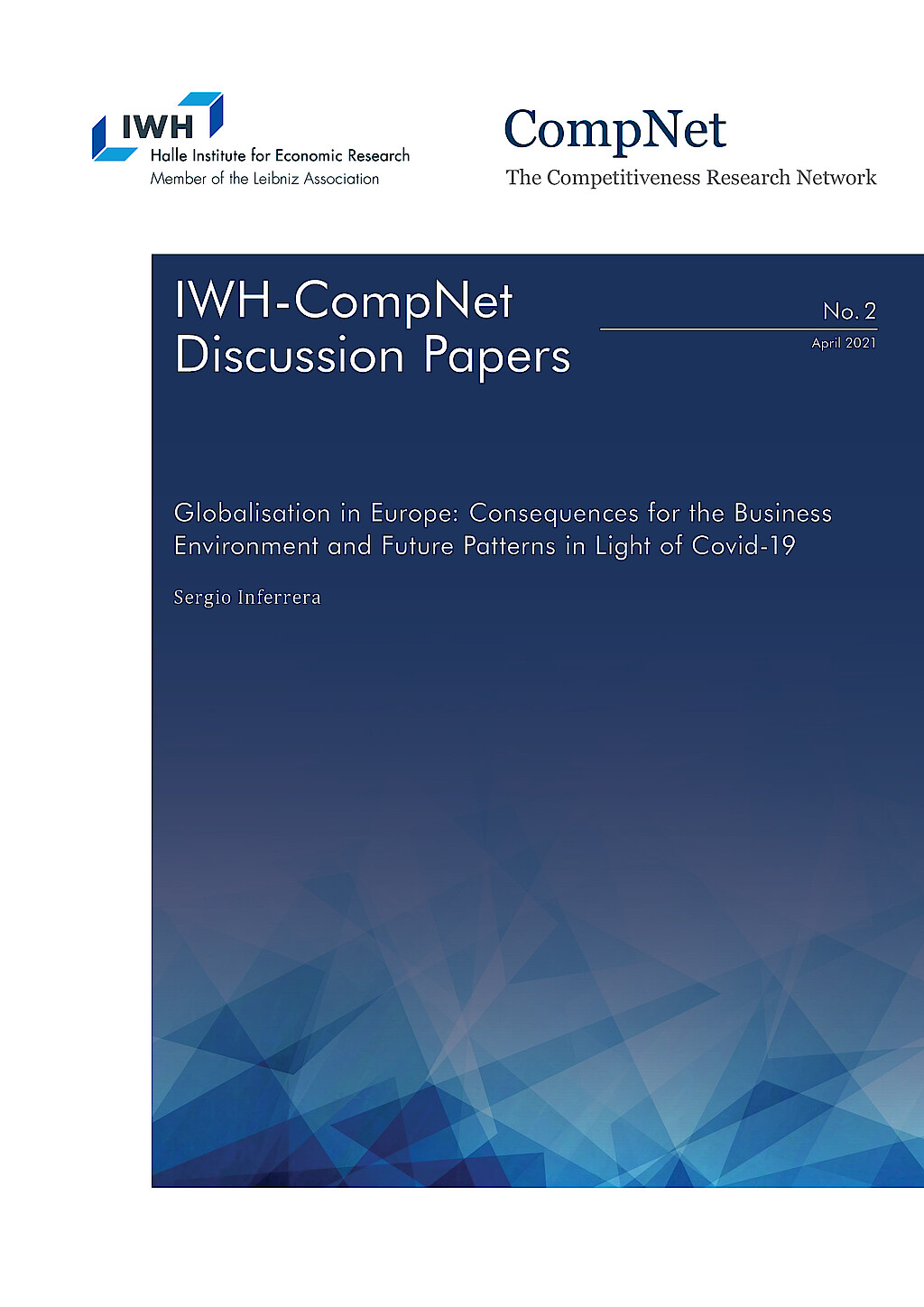
Globalisation in Europe: Consequences for the Business Environment and Future Patterns in Light of Covid-19
in: IWH-CompNet Discussion Papers, No. 2, 2021
Abstract
In this paper, I study the consequences of globalisation, as measured by the involvement of firms in GVC, on the business environment. In particular, I focus on concentration and productivity, firstly by estimating robust elasticities and then isolating the exogenous component of the variation in the participation in GVC. To this aim, I exploit the distance between industries in terms of upstreamness and downstreamness along the supply chain. The evidences suggest that involvement in international supply chains is positively related to concentration at the sector level and positively associated with aggregate productivity, an effect that is driven by the firms at the top of the productivity distribution. Finally, I relate these findings to the current pandemic, going beyond the lack of official statistics and estimating GVC participation for 2020 at the country-level through real time world-seaborne trade data, providing evidences on the re-absorption of the Covid shock in several European economies.



